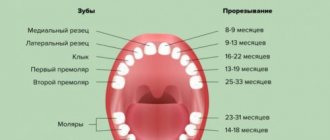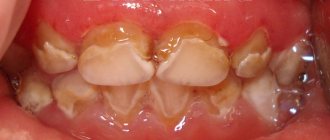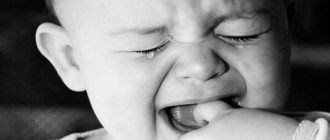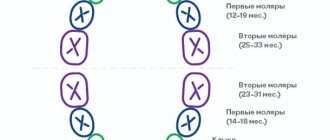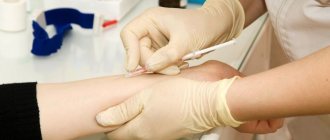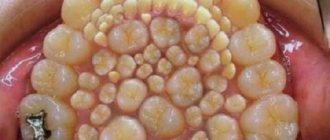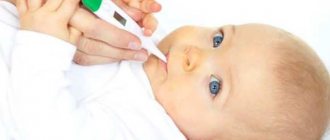Author of the article:
Soldatova Lyudmila Nikolaevna
Candidate of Medical Sciences, Professor of the Department of Clinical Dentistry of the St. Petersburg Medical and Social Institute, Chief Physician of the Alfa-Dent Dental Clinic, St. Petersburg
In the life of every baby and every mother, there comes an exciting moment when the first teeth erupt. And, alas, along with the joy of a new independent stage in the life of a child, new problems interfere in the lives of children and parents. The child's first tooth is accompanied by a very painful condition. Is it possible to alleviate these unpleasant manifestations of growing up? Of course you can. How? Let's figure it out together.
When do the first teeth appear?
Usually a baby's first baby tooth is at 6 months. Although some children have their first teeth appearing as early as 4 months of age, others have to wait as long as 7 months for their first incisors. By the way, both such an early and such a late appearance is considered the norm. At 6-8 months, the central lower incisors appear.
- At 8-12 months, the central upper incisors grow;
- 10-13 months – second upper and lower incisors;
- 1-1.5 years – primary molars;
- 1.5-2 years – fangs;
- 2-2.5 years – second primary molars.
Thus, by the age of two, the baby already has 18 teeth in its mouth. But it is the first incisors that cause the baby the most inconvenience.
How to understand that teeth have started to cut?
The following symptoms will indicate that a child is getting his first baby tooth:
- severe crying, frequent whims of the baby;
- increased salivation;
- slight increase in temperature;
- frequent excitability;
- refusal of food;
- upset stomach (diarrhea).
Of course, the above symptoms individually can indicate not only that the child is getting his first teeth. For example, whims and frequent excitability in a baby can be caused by stress due to moving to a new apartment, fever by a cold, and diarrhea by an allergy to a particular product. Usually, the eruption of the first teeth in children provokes several, or even all, of these signs at once.
Baby's behavior during teething
When children are teething , parents are very worried about how the baby will survive this rather long and often difficult period.
We will not repeat ourselves about the order and pattern of growth of baby teeth. Another of the most common questions is: how many baby teeth do children have? We answer: normally, by the age of one year, the baby should have 8 full incisors - four on the bottom and four on top. By the age of 2 - 16, and by 2.5-3 years all milk teeth - 20 - have grown. By the way, all baby teeth fall out without exception and permanent teeth grow in their place.
Symptoms of teething in a child
But the symptoms of teething in a child can be completely different. Some children tolerate this time calmly; parents do not even know that the child is teething. It’s just that at one moment mom notices that the teeth are already there. Other children show obvious anxiety - their gums constantly itch, they try to chew something, rub their gums against each other, and there is constant salivation. Often the baby becomes whiny, irritable, and sleep is disturbed. The child may even refuse food because it hurts. In these cases, special gels for relieving painful sensations, which are sold in pharmacies, help well. You should also purchase a special silicone finger tip for wiping your gums and cleaning the first teeth that appear. If the mother regularly carries out this procedure from a very early age of the baby (3-4 months), in the future there will be no problems with the child brushing his teeth independently.
restless behavior during teething may also be due to many complications of this period and individual reactions of the body. This may include fever, upset stomach, vomiting, diarrhea, runny nose, and increased drowsiness. Much less often, there may be skin rashes, as well as isolated convulsions, which are most often associated with high fever.
If you are concerned about the baby's condition, especially the child's high temperature during teething , be sure to call your local pediatrician or contact our clinic for advice. We do not recommend listening to the advice of random people, and even grandmothers. It’s just that modern medicine has come a long way, and many of grandma’s recipes are outdated, especially since most of them are completely ineffective. Only a professional can competently assess the situation, including the correct formation of the bite, differentiate the symptoms of teething from other diseases, and choose the most affordable way to help the baby during this crucial period of his life. How to help a child, what you can do and what you absolutely cannot do - read the article “How to help a child when teething.”
When should you worry?
The listed signs of the appearance of the first baby tooth should not bother mom, dad and grandmother too much. The following symptoms may be a reason to contact your pediatrician:
- Early appearance of the first teeth. In rare cases, newborns develop teeth immediately after birth. This may indicate endocrine pathology and requires examination by an endocrinologist.
- A significant delay in teething may also indicate various metabolic disorders in children and requires medical intervention.
- Incorrect appearance order . If, instead of the baby’s first incisors, molars or fangs begin to peck, such disharmony may indicate anomalies in the baby’s development or be a consequence of illnesses that the woman suffered during pregnancy.
- Temperature above 39 degrees. When the first teeth erupt in children, the temperature rises slightly. If your baby becomes hot and the high temperature lasts for several hours, call a doctor immediately.
Teething symptoms in older children
By the age of 7-8 years, the second stage of teeth appearance begins. The milky elements fall out and are replaced by radical structures. This process is tolerated by children much easier than in infancy. There is practically no pain syndrome, since there is already a hole in the gum and it is not damaged. But the following discomfort signs may develop:
- aching sensation in the mouth;
- severe itching in the gums;
- insomnia or taking a long time to fall asleep at night;
- lack of concentration, absent-mindedness;
- swelling of the cheek;
- in rare cases, a slight rise in temperature to 37-37.5 degrees.
Negative signs in the child quickly disappear. But it is important to ensure that infection does not penetrate into the hole where the baby tooth used to be. If a child has a tendency to pathology, it is recommended to rinse the mouth with furatsilin, chamomile, and other herbal antiseptics. Most products not only have disinfectant properties, but also relieve inflammation.
Typically, the filling of the oral cavity with radical elements occurs closer to 10 years. In some children the process may occur delayed. But most cases end quickly and painlessly.
How to help your baby?
To alleviate the symptoms accompanying teething in a child, parents can use one of the following methods:
- Let your baby chew on a crust of bread . Such manipulations will provide gum massage. However, you need to carefully monitor your child so that he does not choke on the spicy crumbs.
- Wipe off saliva from your baby's skin every half hour . Excessive salivation irritates the skin and can lead to rashes, dry skin and allergic reactions.
- Massage your baby's gums . If your baby is suffering from pain and inflammation of the gums, try gently massaging the gums with a clean finger. But, before you start the massage, remember not to lubricate fragile baby gums with alcohol or apply tablets to the tissues.
Why is teething accompanied by hyperthermia?
When a tooth erupts, an inflammatory reaction occurs at the site of gum damage. Immune cells accumulate in this area to protect this part of the mouth from bacteria and fungi. This forms swelling. Chewing becomes difficult and appetite disappears.
Severe pain, the influence of the immune system, and constant lack of sleep in the child lead to an increase in body temperature. It can last 1-3 days. But this is where it always ends and goes back to normal. This distinguishes it from pathologies that form in the oral cavity.
Low-grade fever (value 37-37.5 degrees) is not eliminated in any condition. It means that the body is fighting against some damaging factor, therefore it activates all its forces. Even if the condition is caused by a viral or bacterial infection, antipyretics are not recommended. The same applies to the appearance of new dental elements.
If hyperthermia rises above 38 degrees, it is important to determine the true cause of the condition. When it comes to teeth, use only an antipyretic. If a bacterial infection is present, local or systemic antibiotics are additionally prescribed.
You may also be interested in
CHILDHOOD
Finger wipes from 0 to 3 years ASEPTA BABY
For gentle oral hygiene of babies and massage of gums during the eruption of the first teeth
More about the product
CHILDHOOD
Children's gel toothpaste from 0 to 3 years ASEPTA BABY
Designed for gentle care of baby's gums and baby teeth
More about the product
Asepta Baby wet wipes with xylitol, calcium pantothenate, chamomile and witch hazel extract, intended for children 0-3 years old, will be effective pain-relieving assistants and an alternative to a toothbrush for little ones.
The napkin perfectly cleans all surfaces in the oral cavity, reduces the risk of inflammation and prevents the growth of bacteria in the oral cavity.
How to help with teething?
Measures of treatment and assistance with teething depend on the age of the patient. If it is a baby, the condition is difficult to tolerate. Many drugs are not available for this group of patients. For adult children, completely different therapy is prescribed. All methods are listed in the table.
| Method of therapy | Young children | Older children or adults |
| Painkillers | Anesthetic gels applied to the gums. For example, Kalgel, Kamistad. They act locally, so the risk of side effects is reduced | Topical gel applied to the gums. If the pain is unbearable, take a non-opioid analgesic. NSAIDs relieve pain, fever, inflammation (Ibuprofen) |
| Herbal decoctions | The method is rarely used; it is impossible to predict allergies. Use chamomile or calendula lotions. They have a disinfecting, anti-inflammatory effect | Rinse your mouth with a decoction of chamomile, calendula, celandine, and oak bark. |
| Rinse with antiseptics | Not applicable | Furacilin, Chlorhexidine. Destroy pathogenic microorganisms in the oral cavity, preventing infection of the socket |
| Doctor's help | Not used, teeth erupt on their own | If eruption is difficult, use a scalpel incision in the gums. The method is used for purulent infection |
If a runny nose, diarrhea, or hyperthermia persists after the tooth appears, look for another cause. Conditions require different treatments. For example, using antibiotics.
Experts' opinion
The effectiveness of ASEPTA wipes has been proven in the laboratories of the VERTEX company. Products have:
- Certificate of Conformity No. ROSS RU.AG81.N01070;
- Certificate of Conformity No. ROSS KR.AG81.H01815;
- Certificate of state registration No.RU.47.01.05.014.E.000002.01.18.
In addition, a study of the clinical effectiveness of the use of therapeutic and prophylactic agents of the ASEPTA series in the treatment of inflammatory periodontal diseases in children and adolescents, conducted at the Department of Pediatric Dentistry of the Novosibirsk State Medical University, proved that after the use of Asepta therapeutic and prophylactic agents in children There was a decrease in signs of inflammation in periodontal tissues (disappearance of swelling, bleeding gums).
